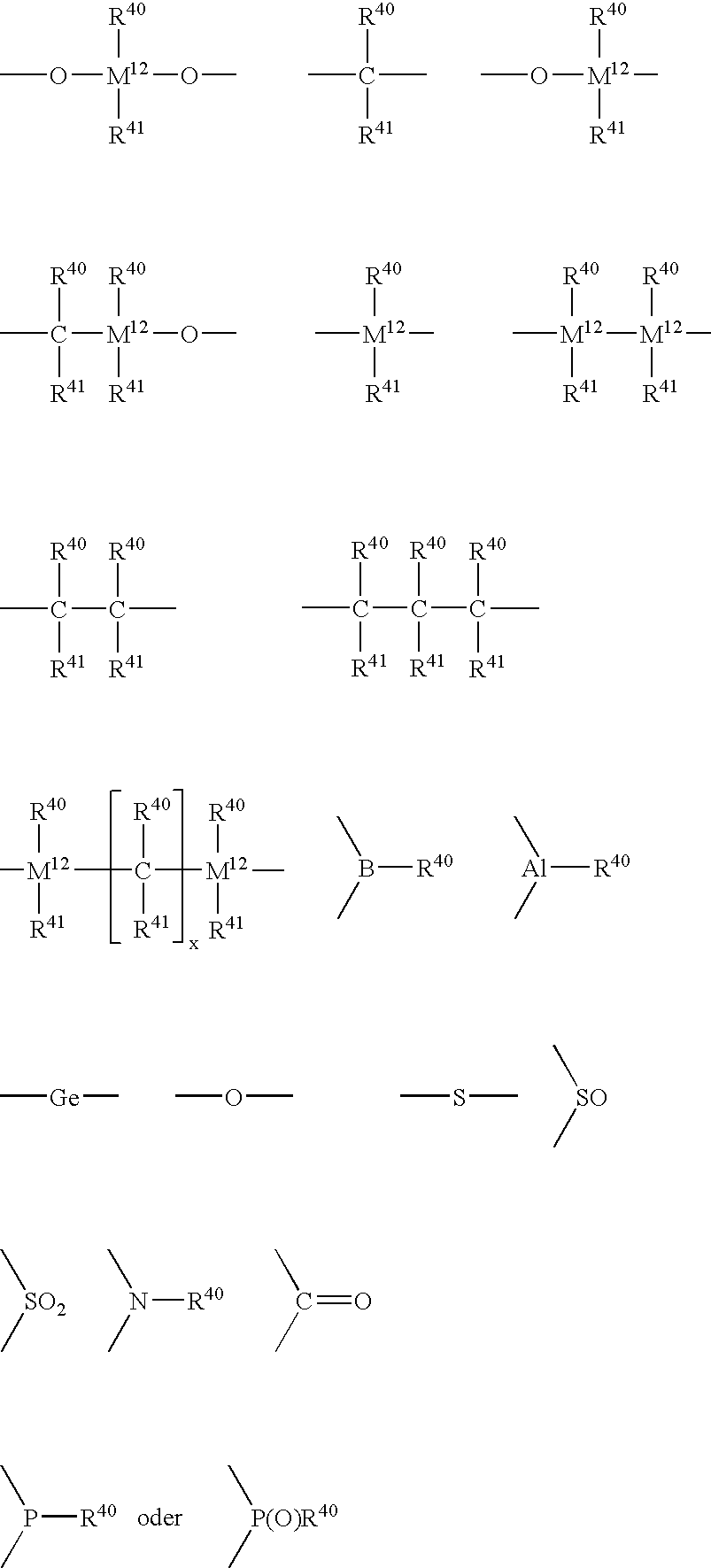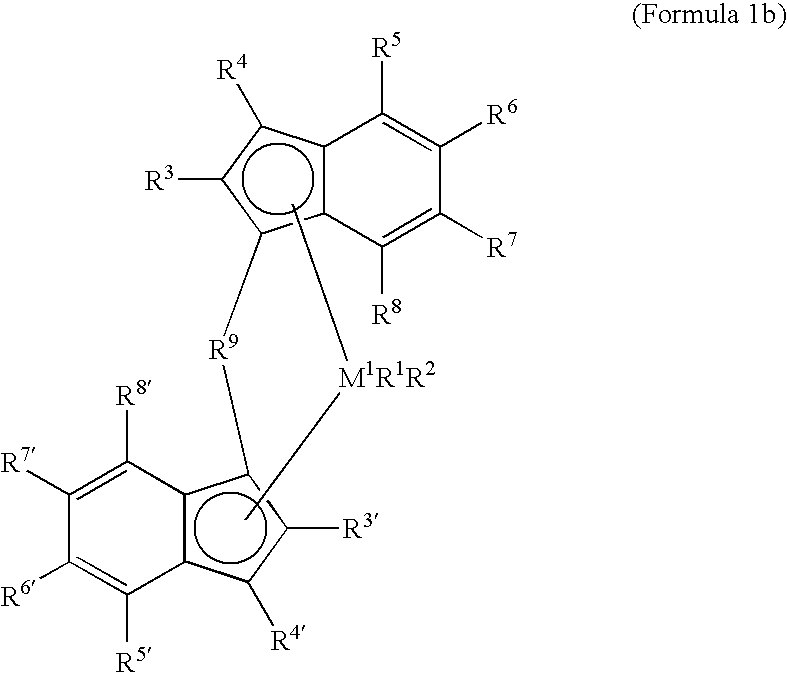Catalyst composition for olefin polymerization
a technology of olefin and composition, applied in the direction of catalyst activation/preparation, chemical/physical processes, organic compounds/hydrides/coordination complexes, etc., can solve the problems of large excess of used catalyst, inability to use homogeneous catalyst systems in liquid monomer or gas phase, and high cost of catalyst systems. , to achieve the effect of good polymer morphology and high polymerization activity
- Summary
- Abstract
- Description
- Claims
- Application Information
AI Technical Summary
Benefits of technology
Problems solved by technology
Method used
Image
Examples
example 1
Preparation of Catalyst System 1
[0411]a) Preparation of Tris(bis(pentafluorophenylboroxy))alane
[0412]1 mL of trimethylaluminium solution (2.1 M in Exxol) is introduced into 13 mL of toluene at room temperature, 2.17 g (6.0 mmoles) of bis(pentafluorophenyl)borinic acid are added. After the addition the suspension is heated at 60° C. for 90 minutes.
[0413]b) Preparation of Supported Tris(bis(pentafluorophenylboroxy))alane
[0414]1.5 g of SiO2 (Grace XPO 2107, dried at 180° C. and 1 mbar for 16 h) are suspended in 15 mL of toluene. 225 μL (1.5 mmoles) of N,N-dimethylbenzylamine are added, and the suspension is stirred slowly for one hour at room temperature. The solution prepared in (a) is added dropwise to this suspension at room temperature, and the resulting suspension is stirred for one hour at room temperature. The suspension is filtered through a G4 fritted glass filter, the residue is washed with 5 ml heptane and the residue is dried in a vacuum. 3.1 g of the support material are o...
example 2
Polymerization Procedure A with Catalyst System 1
[0417]A dry 1.8 dm3 autoclave is purged with nitrogen and subsequently with propylene and charged with 1500 cm3 of liquid propylene. 2 cm3 of triisobutylaluminum (20 wt.- % solution in heptane) are added and the mixture is stirred for 15 minutes at 30° C.
[0418]For the polymerizations 0.002 mmol of the respective metallocene compounds, supported according to Example 1, are used. The corresponding amount of the catalyst powder is suspended in 20 cm3 of heptane and is injected with 15 cm3 of heptane. The reaction mixture is heated to the polymerization temperature of 65° C. and polymerization is allowed to proceed at 65° C. for 60 minutes. The polymerization is stopped by releasing the liquid monomer and cooling down the reactor. The produced polymer is dried under reduced pressure at 80° C. and 380 g of polymer are obtained corresponding to an activity of 330 kg PP / (g metallocene×h). The polymer produced was a free flowing powder of sph...
example 7
Preparation of Catalyst System 4
[0432]a) Preparation of Tris(bis(pentafluorophenylboroxy))alane
[0433]1 mL of trimethylaluminium solution (2.1 M in Exxol) is introduced into 13 mL of toluene at room temperature, 2.17 g (6.0 mmoles) of bis(pentafluorophenyl)borinic acid are added. After the addition the suspension is heated at 60° C. for 90 minutes.
[0434]b) Preparation of Supported Tris(bis(pentafluorophenylboroxy))alane
[0435]1.5 g of SiO2 (Grace XPO 2107, dried at 180° C. and 1 mbar for 16 h) are suspended in 15 mL of toluene. 225 μL (1.5 mmoles) of N,N-dimethylbenzylamine are added, and the suspension is stirred slowly for one hour at room temperature. The solution prepared in (a) is added dropwise to this suspension at room temperature, and the resulting suspension is stirred for one hour at room temperature. The suspension is filtered through a G4 fritted glass filter, the residue is washed with 5 ml heptane and is dried in a vacuum. 3.0 g of the support material are obtained.
[043...
PUM
| Property | Measurement | Unit |
|---|---|---|
| temperature | aaaaa | aaaaa |
| temperature | aaaaa | aaaaa |
| temperature | aaaaa | aaaaa |
Abstract
Description
Claims
Application Information
 Login to View More
Login to View More - R&D
- Intellectual Property
- Life Sciences
- Materials
- Tech Scout
- Unparalleled Data Quality
- Higher Quality Content
- 60% Fewer Hallucinations
Browse by: Latest US Patents, China's latest patents, Technical Efficacy Thesaurus, Application Domain, Technology Topic, Popular Technical Reports.
© 2025 PatSnap. All rights reserved.Legal|Privacy policy|Modern Slavery Act Transparency Statement|Sitemap|About US| Contact US: help@patsnap.com



